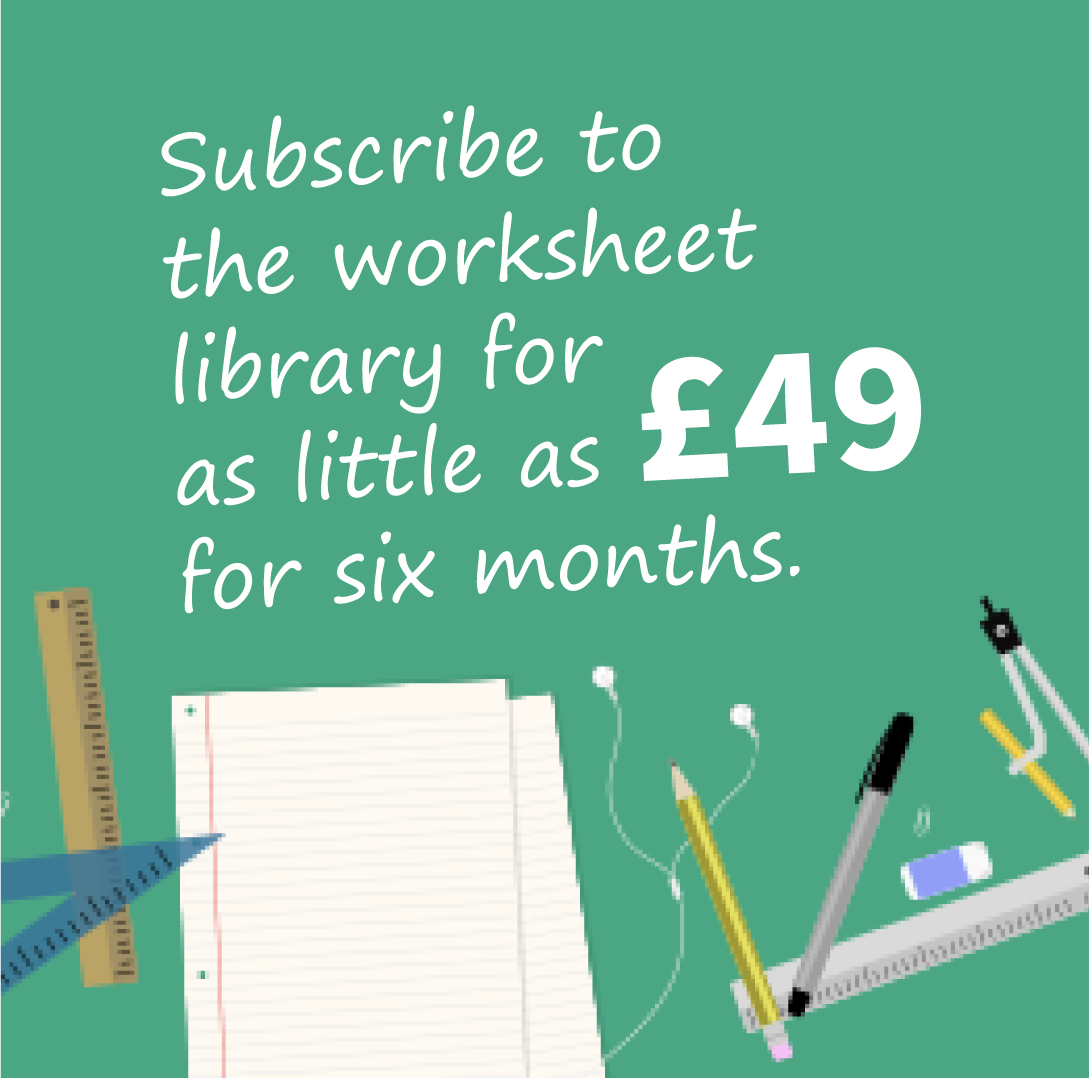What is personification?
What is personification? Personification is a literary technique which attributes human characteristics to a non-living object. These characteristics include feelings, movements and speech.
Here are some examples:
- The sun smiled down at the children.
- The tornado swallowed everything in its path.
- The wind screamed in anger.
- The abandoned house was sad and lonely.
Personification is useful in creative writing, as it is often easier to visualise something when it is compared to an emotion or action that we have experienced ourselves.
It is also used to make writing more exciting, as it manages to bring otherwise expressionless objects to life.
When do children learn about personification?
Personification is typically introduced to children in Years 4 and 5 in key stage 2 (KS2), when they are learning about other types of figurative language like similes and metaphors. Teachers will explore the use of personification within poetry, and ask children to identify when a human characteristic is being used to describe an object.
Eventually, children will be encouraged to write their own descriptions using personification. Teachers may get the class to think of all the ways a certain object can be described using human characteristics, before asking them to bring this object to life by writing their own poem.
How to help children use personification?
As personification is common in everyday expressions, it is possible that children have already experienced it being used before. Expressions they may have heard include:
- The wind is howling.
- Time creeps up on you.
- New York is the city that never sleeps.
- That chocolate cake is calling my name.
Phrases such as the ones above could provide a good starting point to introduce personification into conversations with your child. You could also encourage them to bring to life an object in your house, such as the stairs, by assigning it human characteristics.
Another way of encouraging children to practice personification is to ask them to mind map all the different emotions, movements and sounds that humans make so that they can refer to this when describing objects in their creative writing.
How does Learning Street help children to develop their use of personification?
Our Key Stage 2 (KS2) courses gradually introduce all the main literary devices including personification. As children progress and get older so personification becomes more important.
Our bespoke creative writing course for children in Years 5 and 6 helps them to structure their writing to score high marks. We place particular emphasis in literary devices, including personification, and the role they play in developing involving descriptions.
Our Courses
Click through to review the courses we have available
- Independent School 11 Plus Exam Preparation Courses
- Grammar School 11 Plus Exam Preparation Courses
- Primary School Improvement/Development Courses
Our 11 Plus Mock Exam Papers
Berkshire Reading 11 Plus Mock Exam Papers
Kendrick 11 Plus Mock Exam Papers Bundle ( packs 1-4)
Reading School ( FSCE) 11 Plus Mock Exam 1
Reading School ( FSCE) 11 Plus Mock Exam 2
Reading School ( FSCE) 11 Plus Mock Exam 3
Reading School ( FSCE) 11 Plus Mock Exam 4
Reading School ( FSCE) 11 Plus Mock Exam Papers Bundle (packs 1-4)
Berkshire Slough 11 Plus Mock Exams
Slough 11 Plus Mock Exam Papers Bundle (Packs 1-4)
Barnet 11 Plus Mock Exams
Henrietta Barnett 11 Plus Mock Exam 1
Henrietta Barnett 11 Plus Mock Exam 2
Henrietta Barnett 11 Plus Mock Exam 3
Henrietta Barnett 11 Plus Mock Exam 4
Henrietta Barnett 11 Plus Mock Exam Papers Bundle ( Packs 1-4)
QE Boys 11 Plus Mock Exam Papers Bundle (packs 1-4)
Bexley 11 Plus Mock Exams
Bexley 11 Plus Mock Exam Papers Bundle (packs 1-4)
Bromley 11 Plus Mock Exams
Newstead Wood School Mock Exam 1
Newstead Wood School Mock Exam 2
Newstead Wood School Mock Exam 3
Newstead Wood School Mock Exam 4
Newstead Wood School Mock Exam Papers Bundle ( Packs 1-4)
St Olave’s Grammar School Mock Exam 1
St Olave’s Grammar School Mock Exam 2
St Olave’s Grammar School Mock Exam 3
St Olave’s Grammar School Mock Exam 4
St Olave’s Grammar School Mock Exam Papers Bundle (Packs1-4)
Bucks 11 Plus Mock Exams
Bucks 11 Plus Mock Exam Papers Bundle (packs 1-4)
Cumbria 11 Plus Mock Exams
Queen Elizabeth’s Grammar School 11 Plus Mock Exam 1
Queen Elizabeth’s Grammar School 11 Plus Mock Exam 2
Queen Elizabeth’s Grammar School 11 Plus Mock Exam 3
Queen Elizabeth’s Grammar School 11 Plus Mock Exam 4
Queen Elizabeth’s Grammar School 11 Plus Mock Exam Papers Bundle (Packs 1-4)
Devon and Torbay 11 Plus Mock Exams
Devon and Torbay 11 Plus Mock Exam 1
Devon and Torbay 11 Plus Mock Exam 2
Devon and Torbay 11 Plus Mock Exam 3
Devon and Torbay 11 Plus Mock Exam 4
Devon and Torbay 11 Plus Mock Exam Papers Bundle (packs 1-4)
Colyton School FSCE 11 Plus Mock Exam 1
Colyton School FSCE 11 Plus Mock Exam 2
Colyton School FSCE 11 Plus Mock Exam 3
Colyton School FSCE 11 Plus Mock Exam 4
Colyton School FSCE 11 Plus Mock Exam Papers Bundle ( packs 1-4)
Dorset 11 Plus Mock Exams
Dorset 11 Plus Mock Exam Papers Bundle (packs 1-4)
Enfield 11 Plus Mock Exams
The Latymer School 11 Plus Mock Exam 1
The Latymer School 11 Plus Mock Exam 2
The Latymer School 11 Plus Mock Exam 3
The Latymer School 11 Plus Mock Exam 4
The Latymer School 11 Plus Mock Exam Papers Bundle ( packs 1-4)
Essex CSSE and FSCE 11 Plus Mock Exams
Essex CSSE 11 Plus Mock Exam 1
Essex CSSE 11 Plus Mock Exam 2
Essex CSSE 11 Plus Mock Exam 3
Essex CSSE 11 Plus Mock Exam 4
Essex CSSE 11 Plus Mock Exam Papers Bundle (packs 1-4)
Chelmsford County High School for Girls FSCE 11 Plus Mock Exam 1
Chelmsford County High School for Girls FSCE 11 Plus Mock Exam 2
Chelmsford County High School for Girls FSCE 11 Plus Mock Exam 3
Chelmsford County High School for Girls FSCE 11 Plus Mock Exam 4
Chelmsford County High School for Girls FSCE 11 Plus Mock Exam Papers Bundle ( packs 1-4)
Gloucestershire 11 Plus Mock Exams
Gloucestershire 11 Plus Mock Exam 1
Gloucestershire 11 Plus Mock Exam 2
Gloucestershire 11 Plus Mock Exam 3
Gloucestershire 11 Plus Mock Exam 4
Gloucestershire 11 Plus Mock Exam Papers Bundle (Packs 1-4)
Hertfordshire 11 Plus Mock Exams
Dame Alice Owen’s 11 Plus Mock Exam 1
Dame Alice Owen’s 11 Plus Mock Exam 2
Dame Alice Owen’s 11 Plus Mock Exam 3
Dame Alice Owen’s 11 Plus Mock Exam 4
Dame Alice Owen’s 11 Plus Mock Exam Papers Bundle (Packs 1-4)
Hertfordshire Southwest 11 Plus Mock Exams
Hertfordshire South West 11 Plus Mock Exam 1
Hertfordshire South West11 Plus Mock Exam 2
Hertfordshire South West11 Plus Mock Exam 3
Hertfordshire South West 11 Plus Mock Exam 4
Hertfordshire South West 11 Plus Mock Exam Papers Bundle (Packs 1-4)
Kent 11 Plus Mock Exams
Kent 11 Plus Mock Exam Papers Bundle (packs 1-4)
Kent Medway 11 Plus Mock Exams
Kent Medway 11 Plus Mock Exam 1
Kent Medway 11 Plus Mock Exam 2
Kent Medway 11 Plus Mock Exam 3
Kent Medway 11 Plus Mock Exam 4
Kent Medway 11 Plus Mock Exam Papers Bundle (packs 1-4)
Kingston-Upon-Thames 11 Plus Mock Exams
Stage 1 Tiffin 11 Plus Mock Exam 1
Stage 1 Tiffin 11 Plus Mock Exam 2
Stage 1 Tiffin 11 Plus Mock Exam 3
Stage 1 Tiffin 11 Plus Mock Exam 4
Stage 1 Tiffin 11 Plus Mock Exam Papers Bundle (Packs 1-4)
If a pupil passes the stage 1 process, they will be invited back to take a second test.
Stage 2 Tiffin 11 Plus Mock Exam 1
Stage 2 Tiffin 11 Plus Mock Exam 2
Stage 2 Tiffin 11 Plus Mock Exam 3
Stage 2 Tiffin 11 Plus Mock Exam 4
Stage 2 Tiffin 11 Plus Mock Exam Bundle (Packs 1-4)
Lancashire 11 Plus Mock Exams
Lancashire 11 Plus Mock Exam 1
Lancashire 11 Plus Mock Exam 2
Lancashire 11 Plus Mock Exam 3
Lancashire 11 Plus Mock Exam 4
Lancashire 11 Plus Mock Exam Papers Bundle (packs 1-4)
Lincolnshire 11 Plus Mock Exams
Lincolnshire 11 Plus Mock Exam 1
Lincolnshire 11 Plus Mock Exam 2
Lincolnshire 11 Plus Mock Exam 3
Lincolnshire 11 Plus Mock Exam 4
Lincolnshire 11 Plus Mock Exam Papers Bundle (packs 1-4)
Redbridge 11 Plus Mock Exams
Redbridge 11 Plus Mock Exam Papers Bundle (packs 1-4)
Sutton 11 Plus Mock Exams
Sutton 11 Plus Mock Exam Papers Bundle (packs 1-4)
If a pupil passes stage 1, they will be invited back to take a stage 2 test.
Stage 2 Sutton 11 Plus Mock Exam 1
Stage 2 Sutton 11 Plus Mock Exam 2
Stage 2 Sutton 11 Plus Mock Exam 3
Stage 2 Sutton 11 Plus Mock Exam 4
Stage 2 Sutton 11 Plus Mock Exam Papers Bundle (packs 1-4)
Trafford 11 Plus Mock Exams
Trafford 11 Plus Mock Exam Bundle (Packs 1-4)
West Midlands 11 Plus Mock Exams
West Midlands 11 Plus Mock Exam 1
West Midlands 11 Plus Mock Exam 2
West Midlands 11 Plus Mock Exam 3
West Midlands 11 Plus Mock Exam 4
West Midlands 11 Plus Mock Exam Papers Bundle (packs 1-4)
Wiltshire 11 Plus Mock Exams
Bishop Wordsworth’s 11 Plus Mock Exam 1
Bishop Wordsworth’s 11 Plus Mock Exam 2
Bishop Wordsworth’s 11 Plus Mock Exam 3
Bishop Wordsworth’s 11 Plus Mock Exam 4
Bishop Wordsworth’s 11 Plus Mock Exam Papers Bundle (packs 1-4)
South Wilts 11 Plus Mock Exam 1
South Wilts 11 Plus Mock Exam 2
South Wilts 11 Plus Mock Exam 3
South Wilts 11 Plus Mock Exam 4
South Wilts 11 Plus Mock Exam Papers Bundle (packs 1-4)
Wirral 11 Plus Mock Exams
Wirral 11 Plus Mock Exam Papers Bundle (Packs 1-4)
Upton Hall School Mock Exam Papers Bundle (Packs 1&2)
Yorkshire Calderdale 11 Plus Mock Exams
Yorkshire Calderdale 11 Plus Mock Exam 1
Yorkshire Calderdale 11 Plus Mock Exam 2
Yorkshire Calderdale 11 Plus Mock Exam 3
Yorkshire Calderdale 11 Plus Mock Exam 4
Yorkshire Calderdale 11 Plus Mock Exam Papers Bundle (packs 1-4)
Yorkshire-North 11 Plus Mock Exams
Erymsted’s 11 Plus Mock Exam 1
Erymsted’s 11 Plus Mock Exam 2
Erymsted’s 11 Plus Mock Exam 3
Erymsted’s 11 Plus Mock Exam 4
Erymsted’s 11 Plus Mock Exam Papers Bundle (Packs 1-4)
Ripon Grammar School 11 Plus Mock Exam 1
Ripon Grammar School 11 Plus Mock Exam 2
Ripon Grammar School 11 Plus Mock Exam 3
Ripon Grammar School 11 Plus Mock Exam 4
Ripon Grammar School 11 Plus Mock Exam Papers Bundle ( Packs 1-4)
Skipton Girls’ High School 11 Plus Mock Exam 1
Skipton Girls’ High School 11 Plus Mock Exam 2
Skipton Girls’ High School 11 Plus Mock Exam 3
Skipton Girls’ High School 11 Plus Mock Exam 4
Skipton Girls’ High School 11 Plus Mock Exam Papers Bundle (Packs 1-4)
Independent School Mock Exams
Independent School 11 Plus Mock Exam 1
Independent School 11 Plus Mock Exam 2
Independent School 11 Plus Mock Exam 3
Independent School 11 Plus Mock Exam 4
Independent School 11 Plus Mock Exam Papers Bundle (Packs 1-4)
Northern Ireland Transfer Test
Northern Ireland Transfer Test Mock Exam Paper 1
Northern Ireland Transfer Test Mock Exam Paper 2
Northern Ireland Transfer Test Mock Exam Papers 1-4 Bundle
Northern Ireland Transfer Test Mock Exam Papers 5-8 Bundle
Our Worksheets
We have over ten thousand worksheets listed that can be drawn on to focus on any area of primary school development. We have broken these down into subject and school year.



